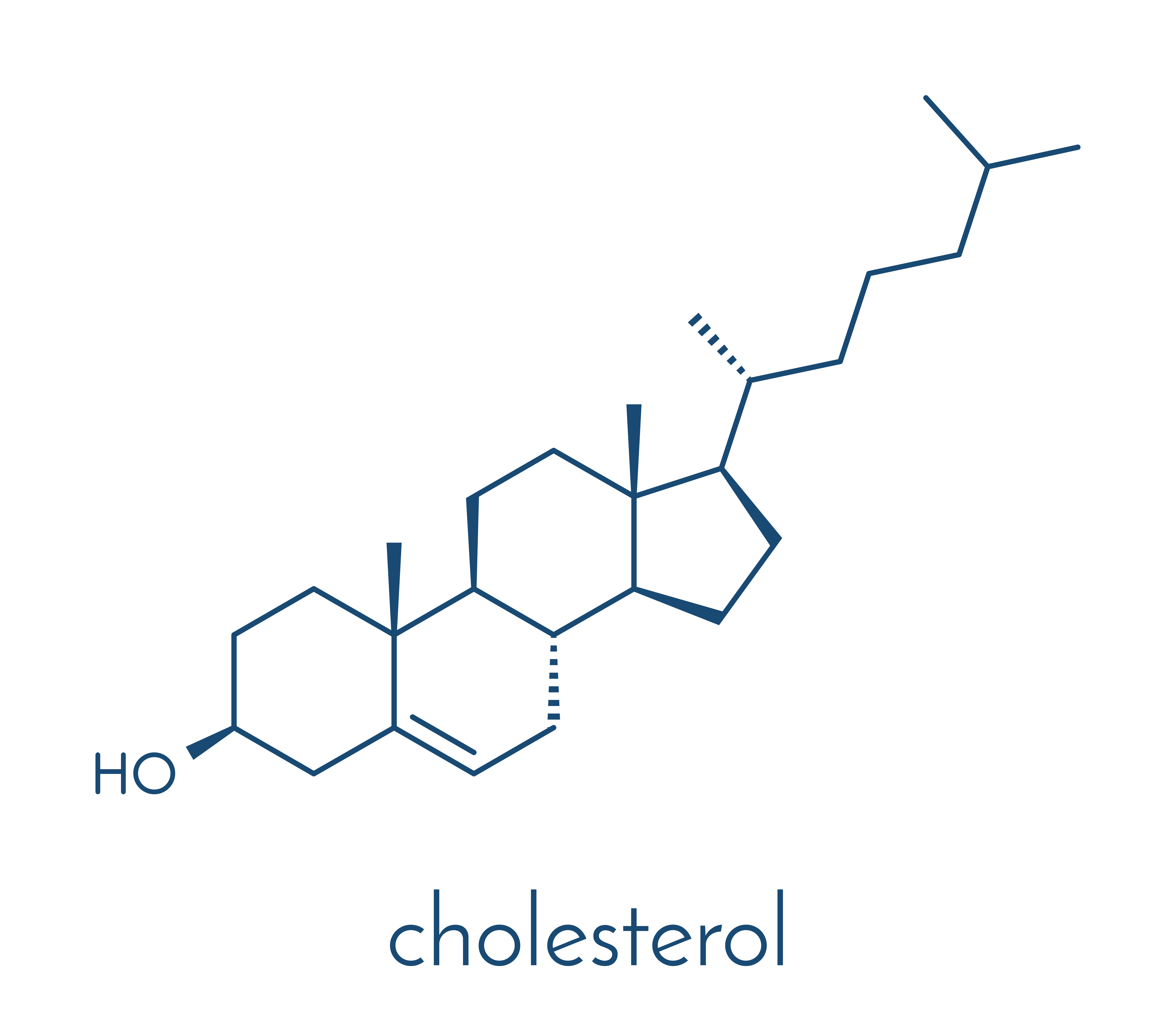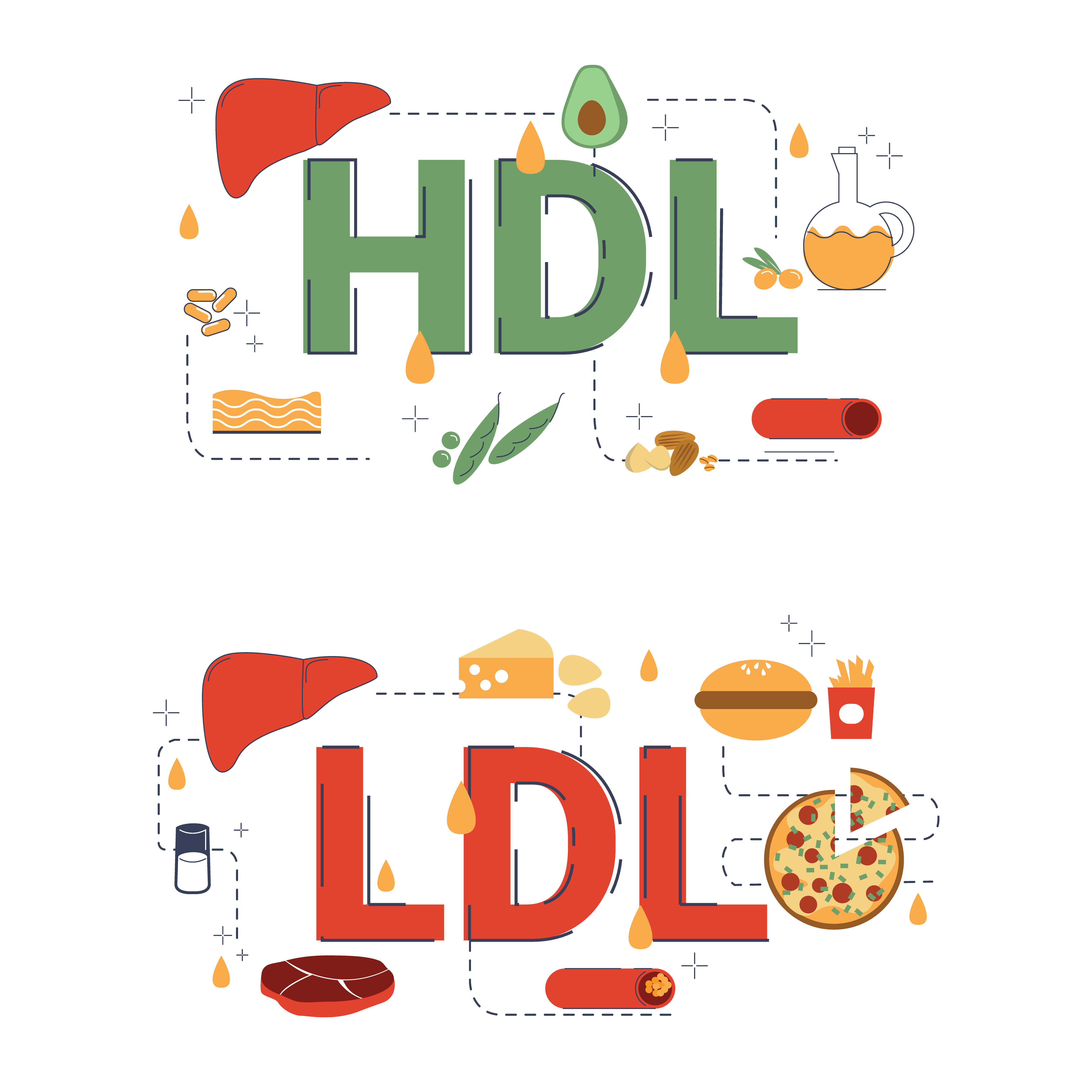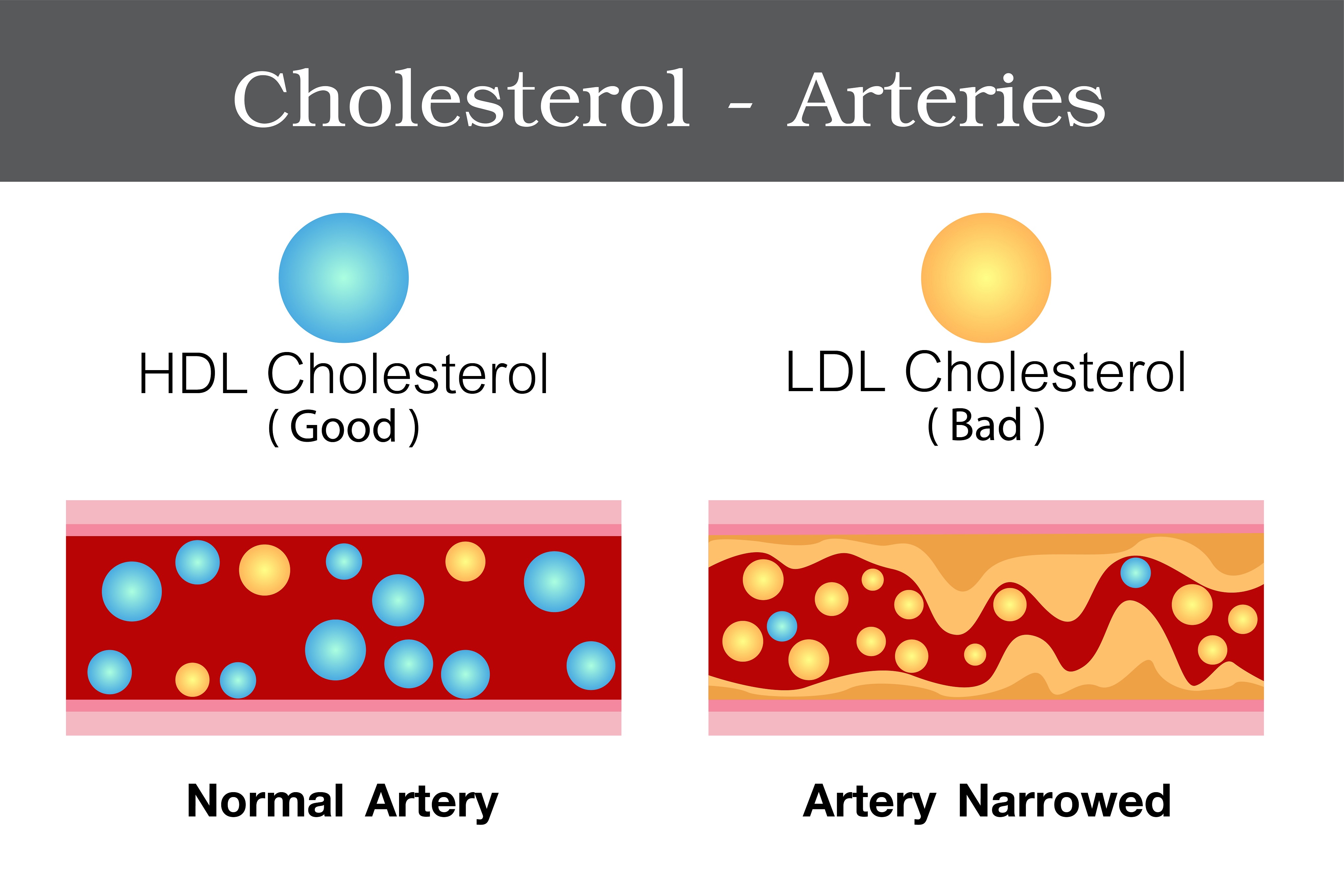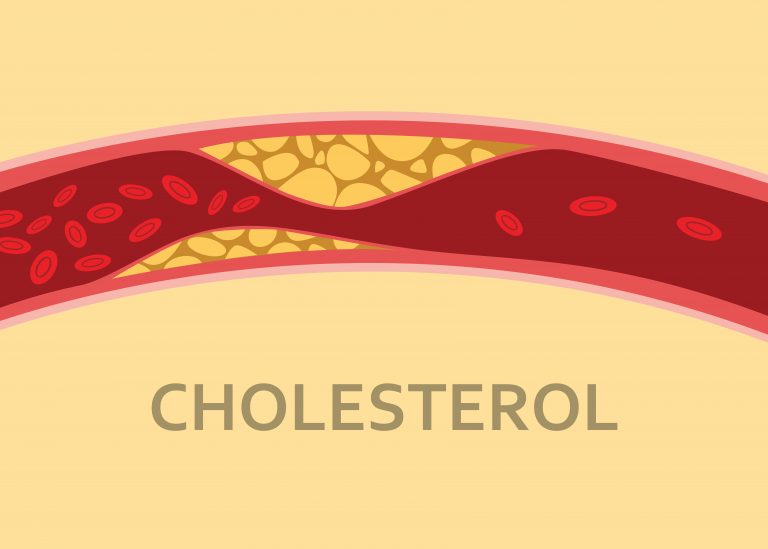Cholesterol plays a key role in the body, helping in the production of essential hormones and enzymes. But too high cholesterol can cause a multitude of problems, such as blockage of the arteries, which, as a result of the lack of treatment can lead to heart attack or stroke. In the following article we will try to introduce you to proven methods for lowering cholesterol and dispel doubts about what we consider a healthy level of cholesterol.
Cholesterol - overview
Cholesterol levels are very often tested. However, very often the results are not adequately analyzed by doctors, and the patient does not receive instructions on how to change the lifestyle in order to take care of their health. Therefore, it is worth spending some time and finding out yourself what results and symptoms should bother us and how we can take care of lowering cholesterol levels.
What exactly is cholesterol?
Cholesterol is a type of fat (sterol). Cholesterol is used to build cell membranes, hormones, tissues and to produce vitamin D. Cholesterol is consumed in a variety of products, such as eggs, meat, butter and dairy products. Our body depends largely on cholesterol. Humans have over 100 genes that affect production, movement and breakdown of cholesterol.Cholesterol and its breakdown products are essential for the absorption of nutrients, reproduction, water regulation, salt regulation and calcium metabolism.
Cholesterol plays a large role in the production of steroids. It is broken down (via cytochrome P450scc) in the adrenal cortex to produce pregnenolone, which is used to produce all steroids. The most important function of cholesterol is its activity in cell membranes. Cholesterol controls the movement of molecules across cell membranes, helping cells communicate with each other.

Cholesterol is formed in the liver, intestine and other organs. Most cholesterol is produced outside the liver. Cholesterol is formed from lanosterol in 8 steps.Genetic disorders affecting any of these stages can cause serious health problems. On average, people produce 10 mg of cholesterol per day per kg of body weight. Production depends on the individual needs of a given person.If you eat cholesterol-rich products, the need for its production inside the body decreases.
High cholesterol in the body may increase the risk of heart disease by blocking the arteries. It can also contribute to other problems such as liver disease and Alzheimer's disease.
Total cholesterol is measured using a method called the fat profile test in the blood (lipid profile). The test measures a maximum of 4 parameters:
- Total cholesterol
- High-density cholesterol (HDL)
- Low density lipoprotein cholesterol (LDL)
- Triglycerides
Everyone over the age of 45 should regularly check their cholesterol levels.Persons under the age of 45, but with a family history of heart disease, diabetes or chronic kidney disease, should also control cholesterol levels. Total cholesterol is the easiest and cheapest parameter to measure, LDL and HDL are recommended as they may be better markers of heart disease.
Cholesterol is a precursor to LDL, HDL cholesterol and very low density lipoprotein (VLDL). VLDL produces LDL, which blocks arteries (atherosclerosis), and HDL can prevent heart disease. Diet strongly affects the relationship between cholesterol and these fats. With low cholesterol diets, the liver quickly removes both LDL and VLDL, so the LDL level in the blood remains very low.
In the case of diets rich in cholesterol, the rate of VLDL removal decreases. This increases the production of LDL, which can be harmful to our health.HDL production also increases with higher levels of cholesterol.
Normal range
The level of your total cholesterol should be maintained at <200 mg/dL.It is recommended to consume from 200 to 300 mg of cholesterol per day. LDL concentrations below 130 mg / dL are also considered beneficial.
Healthy ranges for HDL include:
- For men:> 40 mg / dL
- For women:> 50 mg / dL
However, these values are not the only health indicators. Two people with the same cholesterol level may differ up to a 4.5 times higher risk of stroke, depending on other factors such as genetics, blood pressure and smoking.
High ranges of cholesterol
Cholesterol levels are very strictly regulated by the body. Therefore, periodic and small increases in cholesterol levels are not a big problem. However, when cholesterol levels are consistently increased, this can lead to serious illness.
High total cholesterol is> 240 mg / dL.
The biggest problem associated with elevated cholesterol is the accumulation of LDL, which increases the risk of heart disease. Cholesterol in the arteries can cause atherosclerotic plaques, which are accumulations of fats that cause narrowing of blood vessels and reduce blood flow. Clogged arteries may eventually completely close, leading to a heart attack or stroke.In some cases, the plate may burst, causing fat to accumulate in the bloodstream. This causes blood to clot and reduce blood flow elsewhere in the body.
Cholesterol is also toxic to some cells and can trigger an immune response that leads to the destruction of the artery walls.This reduces blood flow to the tissues and causes damage.
Other problems that can occur with elevated cholesterol are:
- Gallstones
- Liver dysfunction
- Direct blockage of blood vessels (cholesterol crystals)
- Irregular yellow patches on the skin (Xanthomas)
- Alzheimer's disease
- Chest pain and angina
- Sight problems
- Clogging of blood vessels that supply the brain with oxygen and nutrients (carotid artery disease)

It is believed that <140 mg / dL of cholesterol can cause adverse effects. There are links between decreased cholesterol levels and mental disorders. In a study involving 394 patients (follow-up), depression was 3 times more common in people with low cholesterol. Decreased cholesterol also caused an increased risk of death due to suicide or injury.Some studies have shown a relationship only in men.
When comparing medical records and criminal records, lowering cholesterol increased the risk of violent crime.Other studies have shown links between low cholesterol and asocial personality disorders and anxiety. Lowering cholesterol levels can reduce serotonin production, contributing to mental health disorders. Some studies have also linked low cholesterol to cancer.In a study (RCT) of 12,241 patients, people with low cholesterol levels (<159 mg / dL) had a higher chance of developing cancer.
In another study (RCT) of 77,197 patients, people with higher LDL had 43% less risk of cancer. Low cholesterol levels, especially during periods of body development, can lead to a wide variety of defect syndromes. These syndromes are mainly caused by genetic problems in cholesterol formation. Dietary cholesterol supplements may be helpful, but the prognosis is bad.
The diet plays an important role in balancing cholesterol. A high amount of saturated fat can dramatically increase blood cholesterol levels. This increase aggravates obesity. The body has many protective mechanisms that stop the drastic increase in cholesterol levels. The health risk resulting from high cholesterol results from the consistent consumption of high-fat products.
The main sources of cholesterol are eggs, dairy products and meat. It is estimated that 24.6% of the total cholesterol intake in the US diet comes from eggs and egg dishes.Chicken and beef are 12.5% and 11%, respectively. It is not known whether cholesterol from the diet can cause heart disease.According to a large meta-analysis (40 tests and 362 555 patients) - can not.In the US, however, it is still not recommended to consume more than 300 mg / day cholesterol.
In other countries, such as Australia, Canada, Korea and India, there are no restrictions on cholesterol, but only in the case of saturated and trans fats, which may be more dangerous for heart disease.
Other lifestyle factors such as smoking can also affect cholesterol levels. Quitting smoking can increase HDL levels by 24 times, as seen in the study (DB-RCT) of 1 504 smokers. It has also been shown that exercises raise HDL levels, while lowering LDL levels.Therefore, the lack of physical activity can cause an increase in bad cholesterol. In a study (RCT) of 26 male volunteers, increased psychological stress increased the level of total cholesterol.
People who are insulin resistant or can not break down glucose or fatty acids may also have high cholesterol. Some people have reduced activity of genes that break down cholesterol (ATP-binding transporters (ABCs)).This can increase cholesterol levels and reduce the response to cholesterol treatment.
Familial hypercholesterolemia is an inherited disease that is caused by mutations in several genes, including those that are responsible for:
- LDL receptor,
- Apolipoprotein B
This causes problems with LDL removal. Hypothyroidism and kidney problems (nephrotic syndrome) can also increase cholesterol level.

1. Lifestyle changes reduce cholesterol
Quitting smoking can reduce cholesterol
Lifestyle modifications can significantly contribute to maintaining healthy cholesterol levels.In one study (DB-RCT), 923 adult smokers shed cigarettes and their HDL level increased by 2.4 mg / dL .
A study comparing smoking and nonsmokers also showed that smokers had higher total cholesterol (197 mg / dL vs. 189.1 mg / dL) and had lower HDL levels (45 mg / dl vs. 52.1 mg / dL).
Physical activity can reduce cholesterol
Increased physical activity can lower cholesterol.In a study of 123 children, increased activity helped increase HDL levels, while lowering LDL and total cholesterol. The same effect is seen in adults.A meta-analysis of 51 studies and 4,700 adults showed that aerobic exercises, such as running and cycling, increased HDL by 4.6% and reduced LDL by 5%.In another study (RCT), 235 adults showed that the exercise also reduced total cholesterol.
The diet can balance cholesterol
A healthy diet is the key to losing weight. The American Step Association 2 diet, which involves increasing the amount of fish, vegetables, fruits and low-fat dairy products while reducing salt and alcohol intake, lowers total cholesterol.This diet also reduces LDL by as much as 20%.
Proper diet can cause significant weight loss.In the study (DB-RCT), 384 patients lost weight by reducing total cholesterol by 25 to 30 mg / dL.
Stress reduction reduces cholesterol
Reducing stress can help lower cholesterol.In a study involving 26 adults, increased psychological stress increased the level of total cholesterol.Cholesterol levels remained high even after stress relief, indicating long-term consequences.
In another study involving 40 academic teachers and 40 housewives, stress levels were compared between the two groups.Housewives showed greater environmental, psychological and physiological stress, which caused higher levels of total and LDL 50 cholesterol.
2. Drugs can reduce cholesterol
Cholesterol can be reduced by medicines such as statins that reduce the amount of cholesterol produced by the liver.Statins increase LDL uptake in the liver, while increasing HDL cholesterol.They are perceived as very safe.
Some examples of statins include:
- simvastatin
- lovastatin
- pravastatin
- atorvastatin
- rosuvastatin
In a large study (RCT in 284 patients with dementia and 1080 healthy) statins reduced the risk of developing dementia in healthy subjects.Another study (RCT) of 60,349 patients showed that taking statins reduces the chance of developing Alzheimer's disease by 60 to 73% .
In another study (RCT), 4,444 patients with heart disease found that simvastatin reduced total cholesterol by 26%, LDL by 36%, and risk death by 30%.Lowering LDL has always been shown to be beneficial in the fight against potential heart disease. Although statins lowering cholesterol are the main medications, other medications such as bile acid sequestrants are useful.Depending on the dose, these drugs reduce LDL by up to 30% and reduce the risk of heart disease.
Other medicines that can lower cholesterol are:
- clofibrat
- colestipol
- cholestyramine
- gemfibrozil
- fibrates
- niacin
- ezetimibe
- lomitapide
- mipomersen
Side effects of cholesterol-lowering drugs
Cholesterol lowering therapies can also cause some side effects.Statin therapy, which is the first choice treatment to reduce cholesterol, can cause muscle pain or inflammation (inflammation of the muscles) in 8 to 9% of patients. Statin therapy may also increase the incidence of type 2 diabetes, as seen in a meta-analysis of 13 studies involving 91 140 patients.
3. LDL can be removed from the blood
A procedure called lipoprotein apheresis removes LDL from the blood. This is an option for people who do not respond to medications and have very high cholesterol levels. This method reduces LDL by up to 60% in patients with familial hypercholesterolemia. In another study, 45 patients with high-resistant drug-resistant cholesterol showed that lipoprotein apheresis reduced total cholesterol by 57%, LDL by 55.9%, and HDL increased by 14.3%.In almost all patients, an improvement in quality of life and fitness was observed.
In another study involving 14 patients with hypercholesterolemia, lipoprotein apheresis was safe for a long time (over 10 years) and caused a mean drop in LDL by 82%.
There are different types of lipoprotein apheresis:
- immunoadsorption
- Heparine-induced precipitation of LDL / fibrinogen,
- LDL adsorption of dextran sulfate,
- Hemoperfusion LDL.






